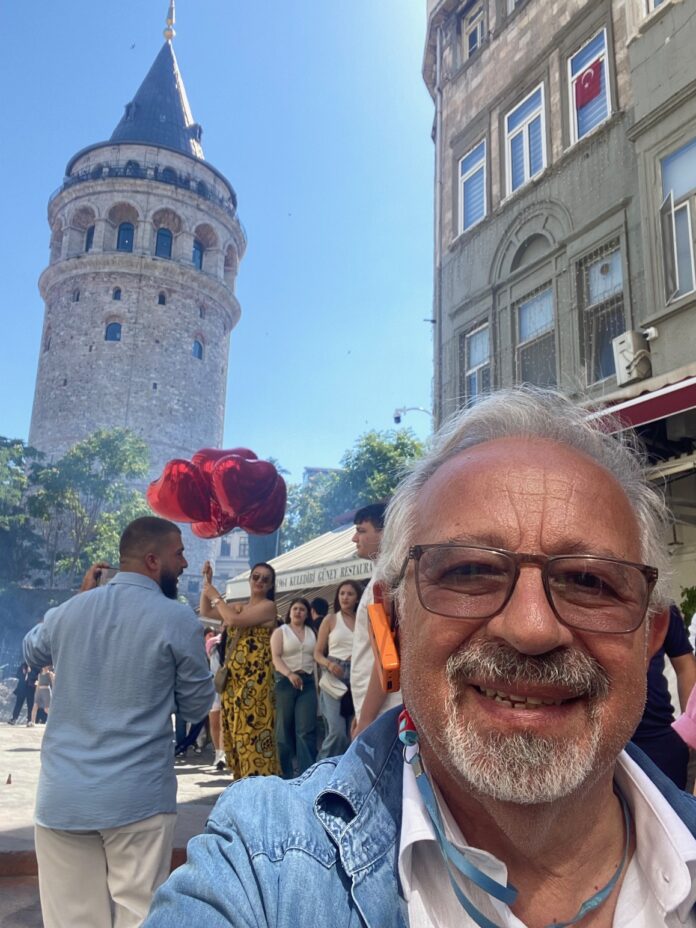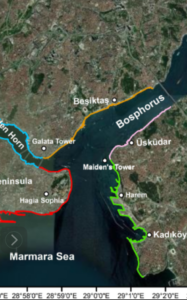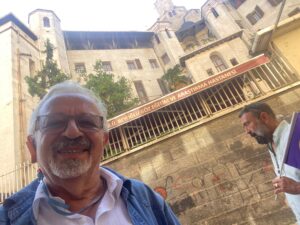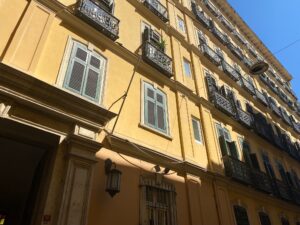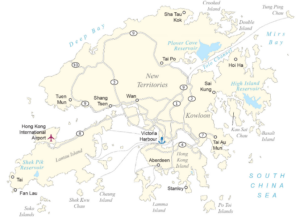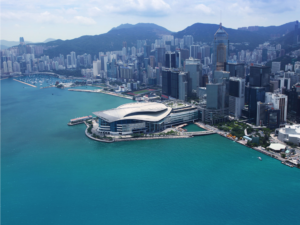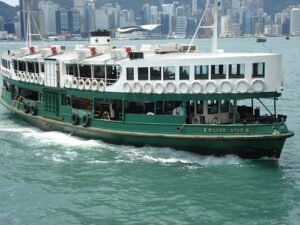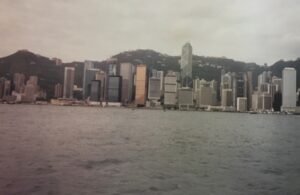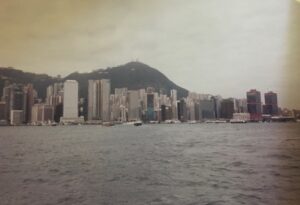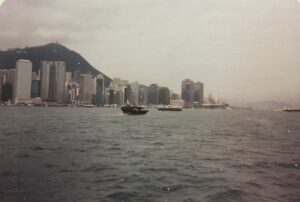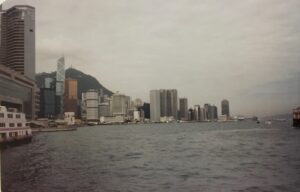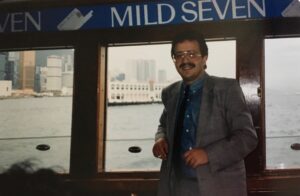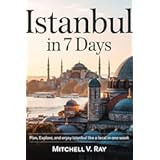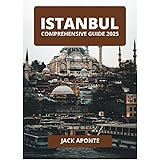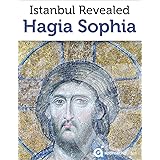Chronological Names of Istanbul City
- Byzantium: 6th century BC – AD330
- Constantinople: M330-1453
- Constantinople: AD 1453-1923
- Istanbul: AD1930-
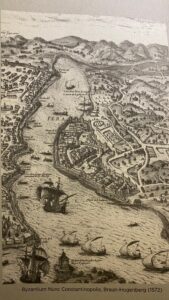
Galata and Hong Kong
There are great similarities between Galata and Hong Kong. Both are ports. Galata port was a main exit point for trade, especially with the Genoese colonies in the Black Sea. While access to the Istanbul Peninsula from Galata port is possible to Thrace and the European continent, via Üsküdar it is possible to open up to Anatolia and the Asian continent.
Hong Kong Island, on the other hand, became the British colonial port, making it possible to reach the Chinese continent and the Chinese ports in the Canton region via the Kowloon and New Territories regions on the opposite coast.
As can be seen, both port cities have played a major role, especially in trade history. Galata, which functioned as a maritime colony during the Eastern Roman Empire, continued its same function during the Ottoman period and further advanced its position with the Republic.
While Galata was famous for its bankers, especially during the Ottoman period, Hong Kong, as a result of the transformations it went through over time, became Chinese territory under a 50-year special administration format after leaving British rule in 1997. Like Galata, Hong Kong is a critical node with its banks and financial services.
GALATA
HONG KONG
Comparison Table
| Feature | Galata (Istanbul) | Hong Kong |
| Location | On the opposite shore of Istanbul’s historical peninsula, the Golden Horn shore | On the coast of the South China Sea, southeast of China |
| Historical Role | A center of trade, finance and diplomacy during the Ottoman period | The commercial and financial centre of Asia during the British colonial period |
| Trade and Port | An important port used by Genoese and Venetian traders | The hub of global maritime trade and container shipping |
| Financial Center | Ottoman money changers, bankers and Galata bankers | One of Asia’s largest banking and financial centres |
| Foreign Influence / Management | Genoese, Venetian and Western influences; semi-autonomous structures | It was ruled as a British colony between 1842 and 1997. |
| Multiculturalism | Greek, Armenian, Jewish, Levantine communities | Chinese majority, Western immigrants, multi-ethnic structure |
| Landmarks | Galata Tower, Bankalar Street | Victoria Peak, IFC Tower, Hong Kong Harbour |
| West-East Interaction | The trading point of the West (Europe) within the East (Ottoman) | The intersection of Chinese culture and Western management systems |
| Cultural Structure | Mix of Ottoman and European architecture, religious diversity | Chinese traditions + British-influenced urban culture |
| Current Situation | Istanbul’s touristic, historical and art-oriented district | Special administrative region of China, global financial center |
Although Galata (Istanbul, Turkey) and Hong Kong (China) seem very different at first glance, they have some striking similarities in terms of history, geography, trade and culture. Here are the main similarities:
1. Being a Port and Trade Center
- Galata: It was Istanbul’s port gate to Europe since the Ottoman period. The Venetians, Genoese and later the Levantines established trading colonies in Galata. It functioned as a trade bridge between the East and the West for centuries.
- Hong Kong: A British colony from the 19th century, it became a trading hub between China and the West. Today, it is still one of the most important financial and commercial centers in Asia.
2. Foreign Population and Cosmopolitan Structure
- Galata: For centuries, merchants, diplomats and artists from Jews, Greeks, Armenians, Italians, French and many other nations lived here. Different languages, religions and cultures lived together.
- Hong Kong: Home to a large immigrant population including Chinese, British, Indians, Filipinos and Europeans. It is notable for its cosmopolitan lifestyle and multilingual structure.
3. Semi-Autonomous/Colony Status
- Galata: It was a semi-autonomous region ceded to the Genoese during the Byzantine and early Ottoman periods. It had its own administration, city walls and diplomatic status.
- Hong Kong: It was a British colony between 1842-1997. It was a region that established its own government and was governed by separate laws from China. After 1997, it retained some of its autonomy with the “One Country, Two Systems” structure.
4.Strategic Location
- Galata: Located at the entrance of the Bosphorus, it was in a key position in terms of maritime traffic, defense and communication.
- Hong Kong: It has strategic importance both commercially and militarily due to its location in the South China Sea.
5.Being a Cultural Transition Point
- Galata: It was the meeting point of Eastern-Western cultures and Islamic-Christian influences. This synthesis can be seen in the architectural and social structure.
- Hong Kong: It was an area where Eastern (China) and Western (England) cultures intersected. Today, Western infrastructure and Chinese traditions are still intertwined.
6. The Front Lines of Modernization
- Galata: It was one of the first places where the Tanzimat and subsequent Westernization movements were implemented. Innovations such as banking, theater, and printing first emerged in Galata.
- Hong Kong: Served as a showcase for China’s modernization, leading the region in areas such as finance, technology and education.
7. Multilayered Identity and Tension
- Both places witnessed identity conflicts and social tensions resulting from the coexistence of different cultures, interests and communities.
Conclusion:
Galata and Hong Kong are two cities that have historically been open to foreign influence, have become commercial and cultural centers with their identity as port cities, are cosmopolitan, have semi-autonomous pasts, and are the intersection points of East and West. In these respects, they are two special places that can be said to be “far from each other but close in spirit.”
Map Description
- Galata (left in upper images): The historical region at the mouth of the Golden Horn (1922 map and coastal change studies).
- Hong Kong (bottom right): You can see the islands, Kowloon peninsula and New Territories on the comprehensive map.
Summary and Commentary
Both regions have strategic coastal points, historical semi-autonomous/colonial status, cosmopolitan structure and commercial-modern center identity. Being transition points between different cultural traditions is the strongest common feature of these two places.
Although Galata (Istanbul) and Hong Kong are geographically and historically different, they share interesting similarities in terms of their urban fabric, socio-cultural dynamics and architectural features. Here are some striking parallels between these two regions:
- Dense Population and Vertical Architecture
– Hong Kong: Due to the population density, giant structures such as the “Monster Building” (for example, the complex of 5 buildings in Quarry Bay) necessitate vertical living. Built in the 1960s, these structures were designed to meet maximum housing needs in a narrow area.
– Galata: Historically a trade center and due to limited land, it is characterized by tall buildings (for example, the apartments around Galata Tower) and narrow streets. The settlements within the walls dating back to the Genoese period also exhibit a similar density. - Cosmopolitan Identity and Cultural Diversity
– Hong Kong: It has a multicultural structure shaped by Chinese, British and international influences. Different ethnic groups live together in areas such as Quarry Bay.
– Galata: It bears traces of Genoese, Byzantine, Ottoman and Levantine cultures. It has been a meeting point for Jewish, Greek, Armenian and Italian merchants throughout history. For example, structures such as the Arab Mosque and Neve Shalom Synagogue reflect this diversity. - Intertwining of the Historical and the Modern
– Hong Kong: Modernist buildings such as the “Monster Building” in Quarry Bay are juxtaposed with traditional Chinatowns. This duality is also emphasized in films (such as *Ghost in the Shell*).
– Galata: Historical buildings such as the Galata Tower (14th century) are in harmony with the surrounding modern cafes and art galleries. The 19th century Bank Street and contemporary street art coexist here. - Relationship with Water
– Hong Kong: Being located on the seashore and its port culture play a critical role in shaping trade. Quarry Bay is also a bay area.
– Galata: Located north of the Golden Horn and has been prominent throughout history with its port activities. During the Genoese period, city walls were built for maritime trade. - Landmarks and Legends
– Hong Kong: Structures such as the “Monster Building” symbolize the city’s population pressure and are a tourist attraction.
– Galata: Galata Tower has become a cultural icon, with stories such as the legend of Hezarfen Ahmet Çelebi and the myth of his “love” with the Maiden’s Tower. - Transformation and Urban Resilience
– Hong Kong: The population explosion in the 1960s necessitated state-supported housing projects. Today, these structures have become tourist attractions.
– Galata: The tower, destroyed by fires and earthquakes during the Ottoman period, has survived to the present day through continuous restoration. It was reorganized as a museum in 2020.
- Summary Table
Feature Hong Kong (Quarry Bay) Galata (Istanbul)
Architectural Density Structures like the Monster Building Narrow streets, high-rise buildings
Cultural Diversity Chinese-British mix Genoese-Ottoman-Levantine
Connection by water Port culture Commercial role of the Golden Horn
Landmarks Monster Building Galata Tower
Transformation Housing projects → Tourism Fire/Earthquake → Restoration
These similarities show that both regions have been affected by similar urban and social dynamics throughout history. You can check out the sources for details.

